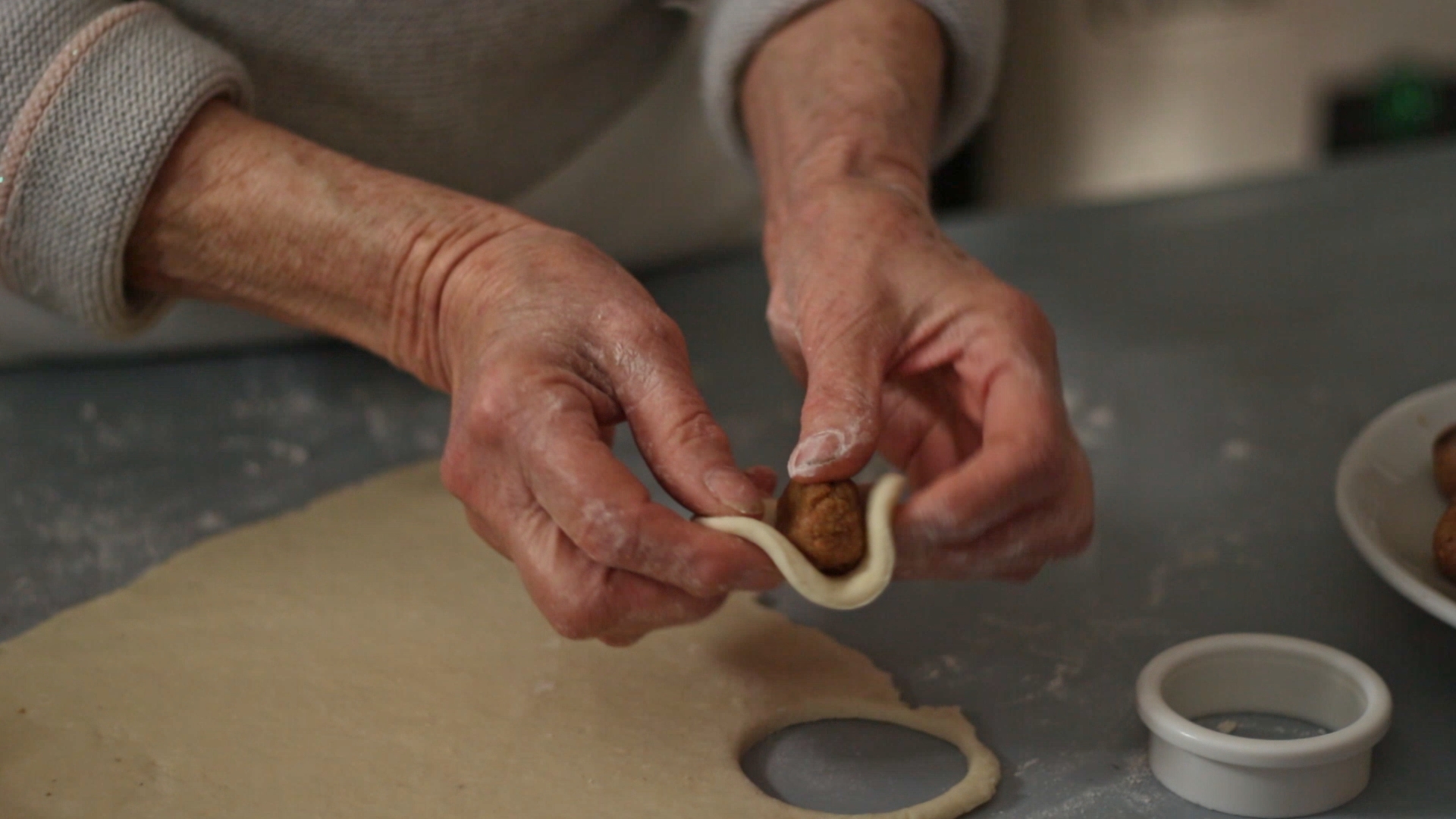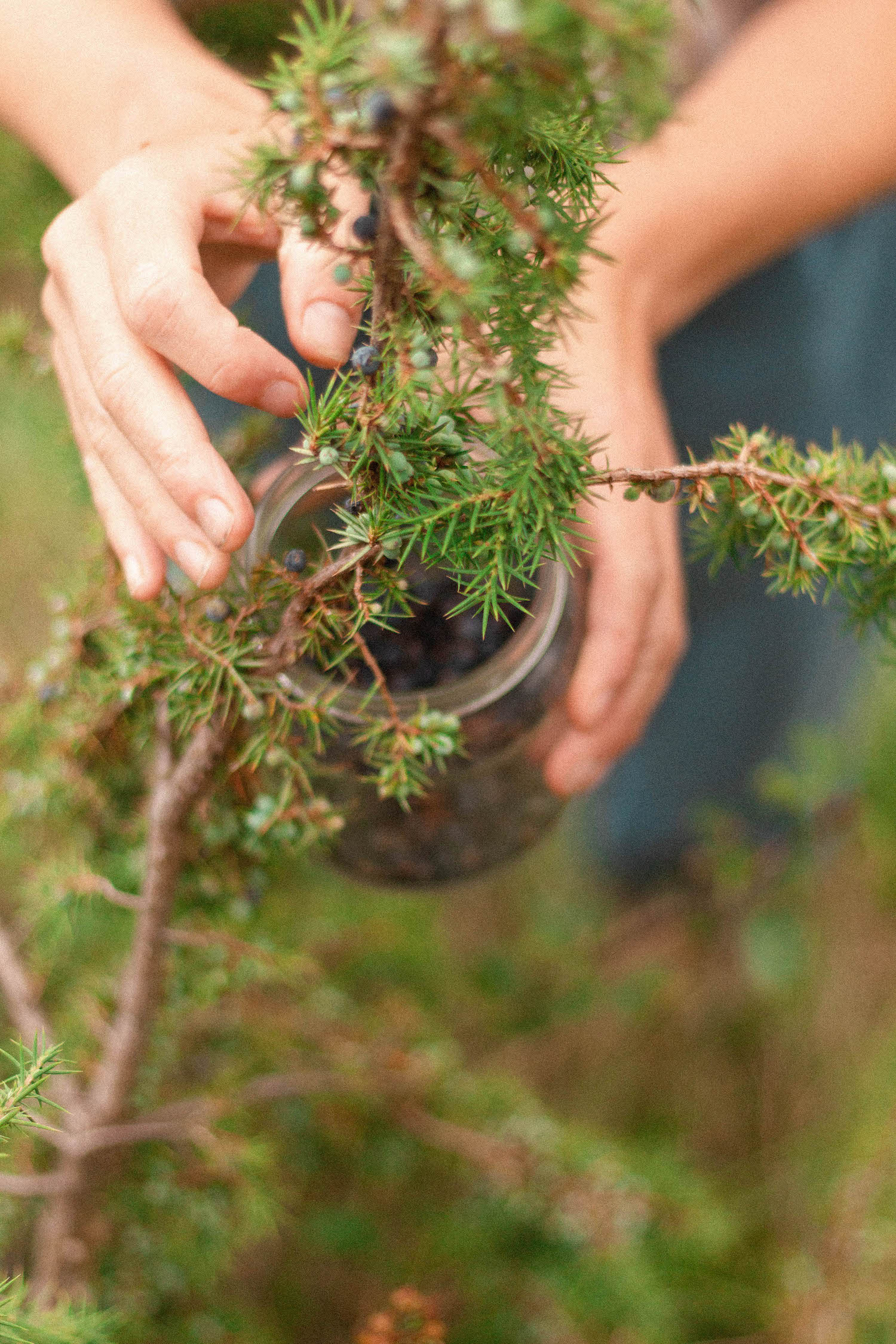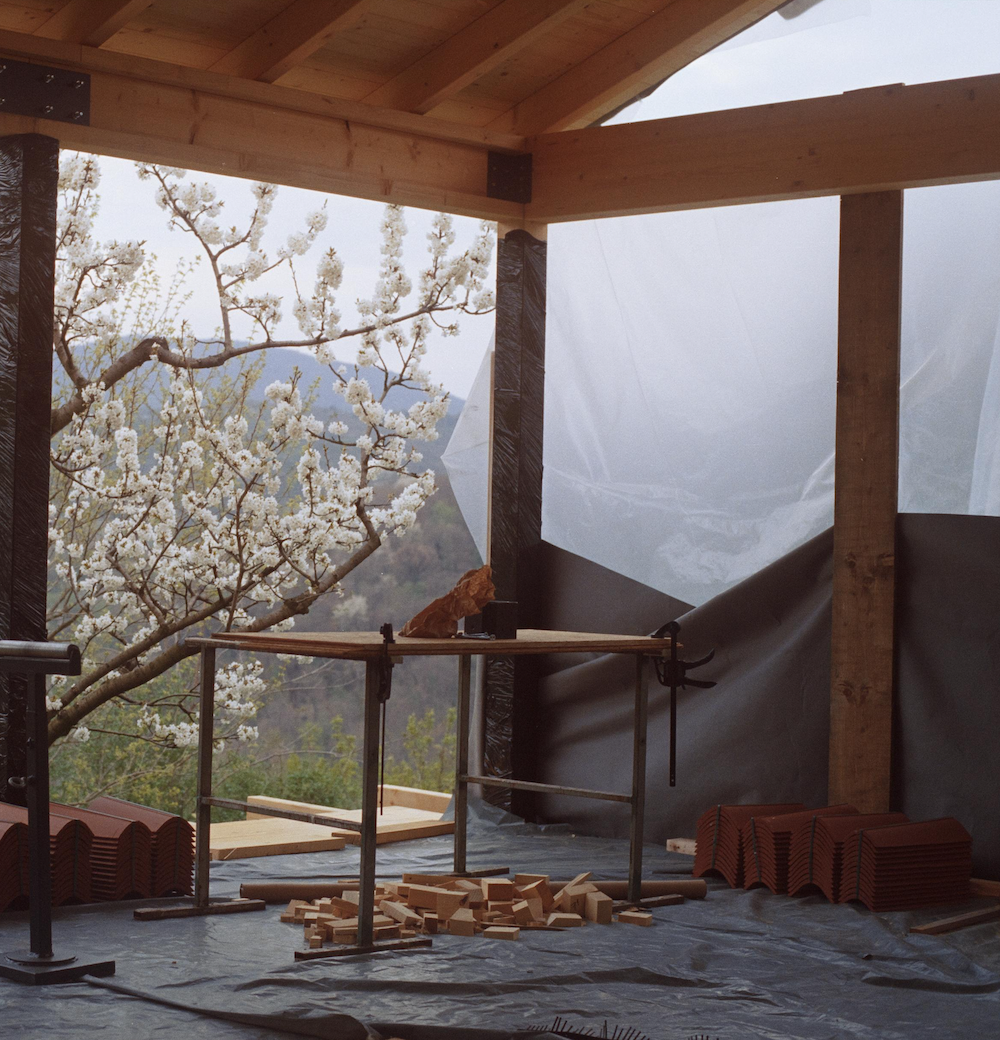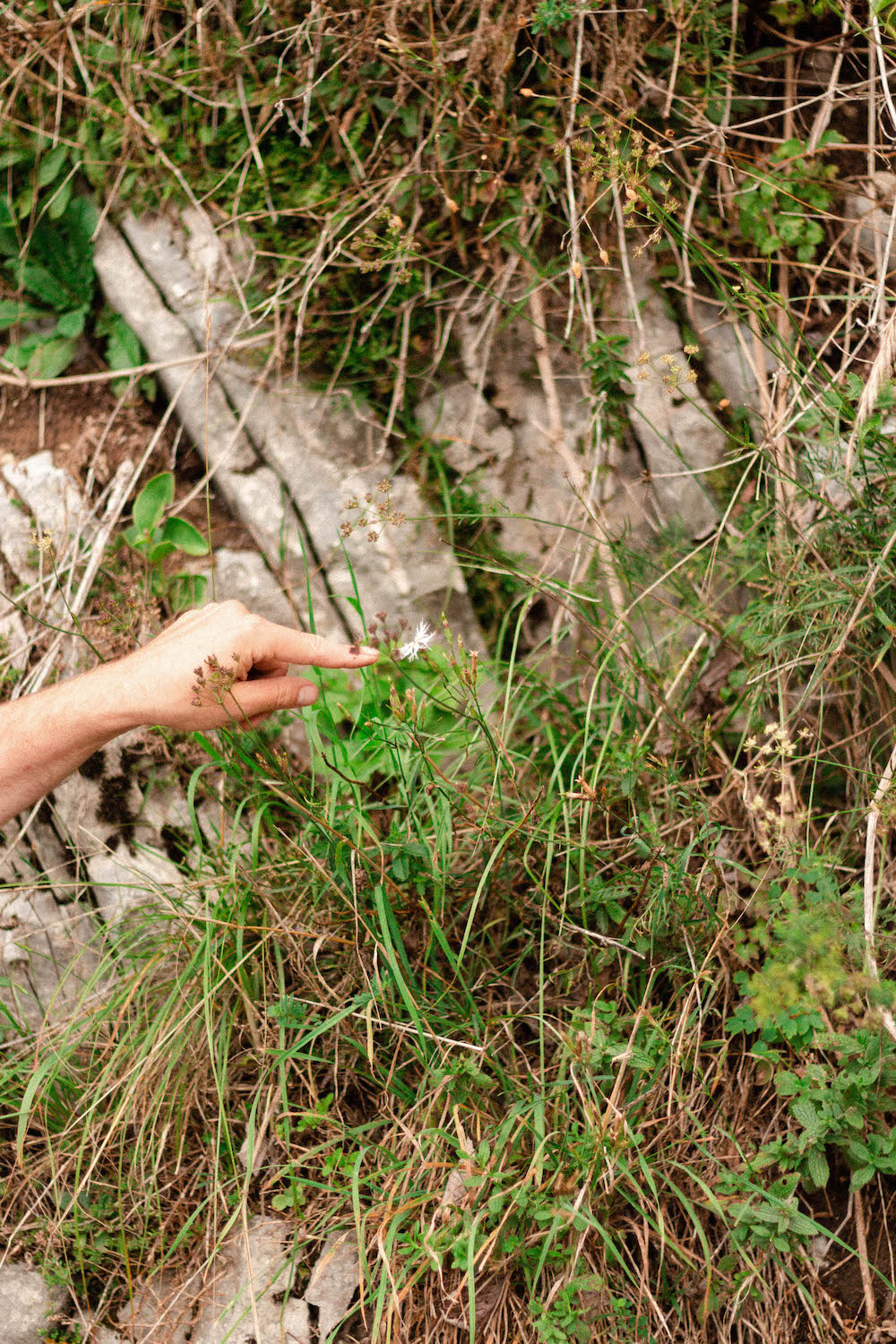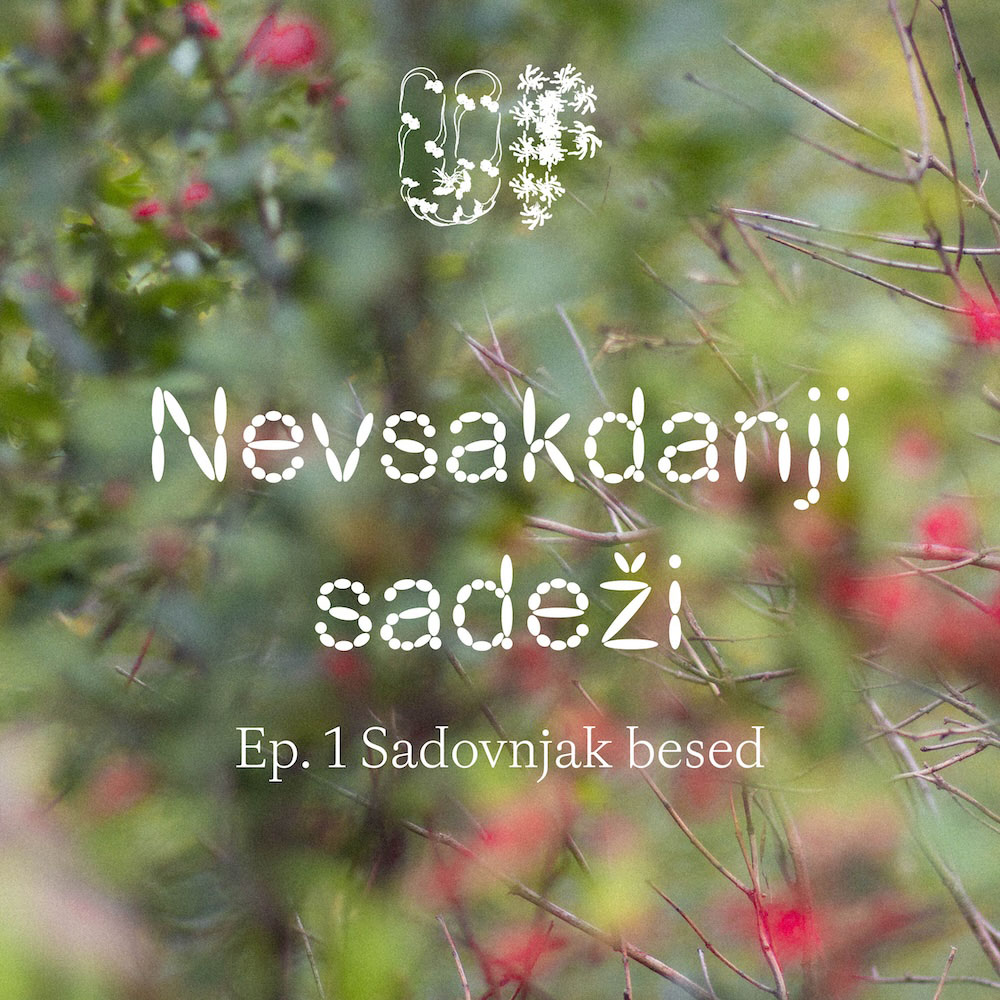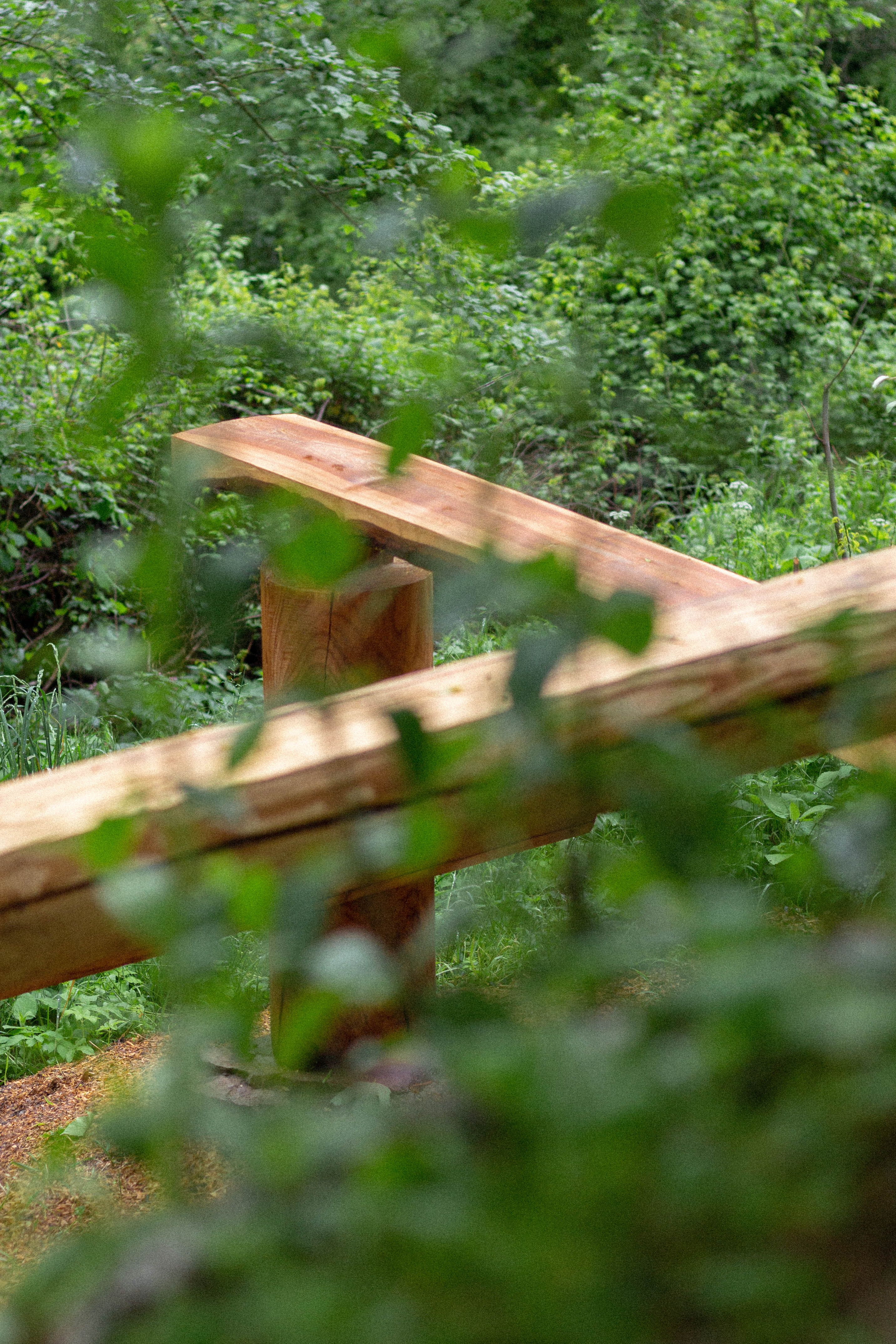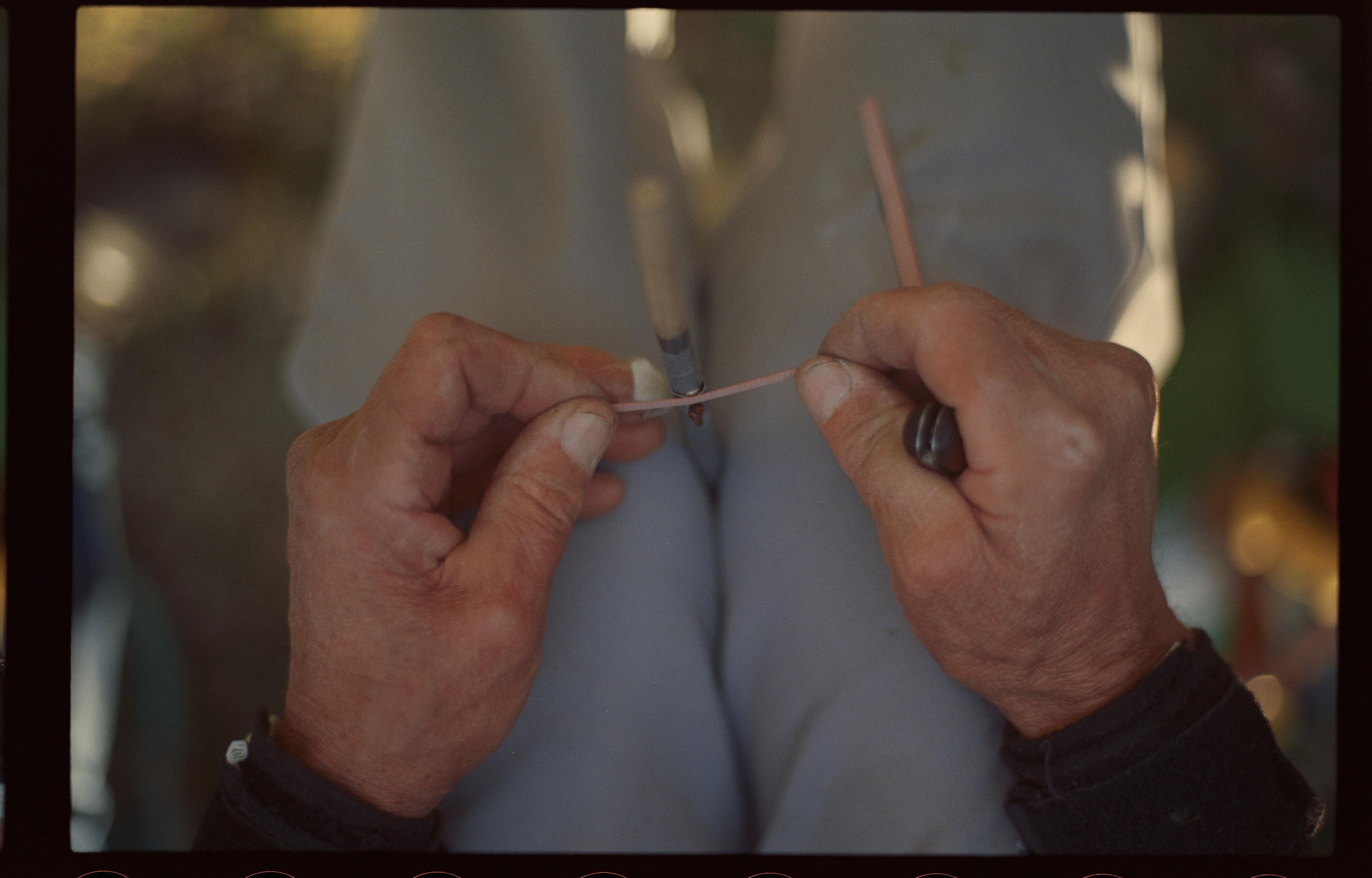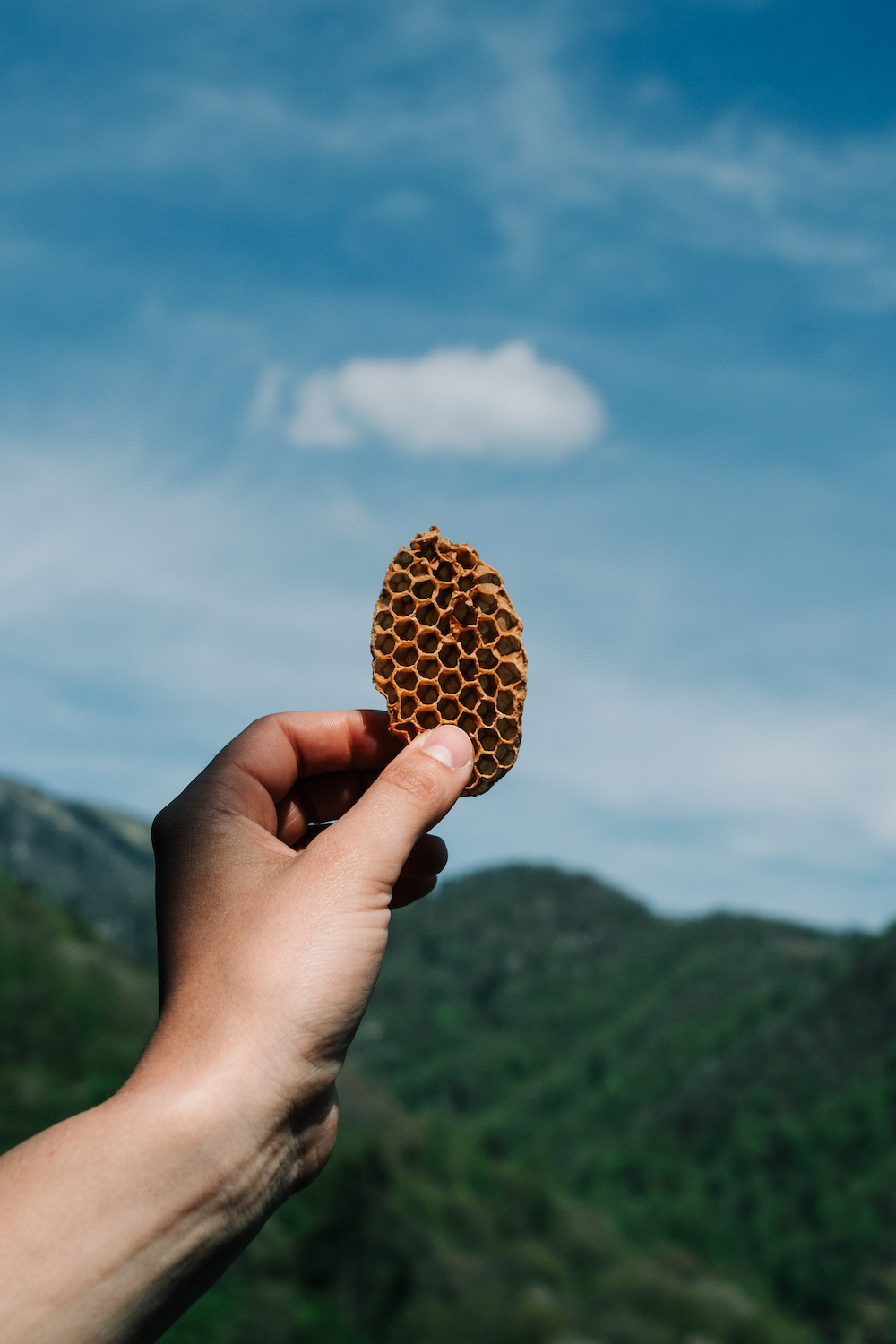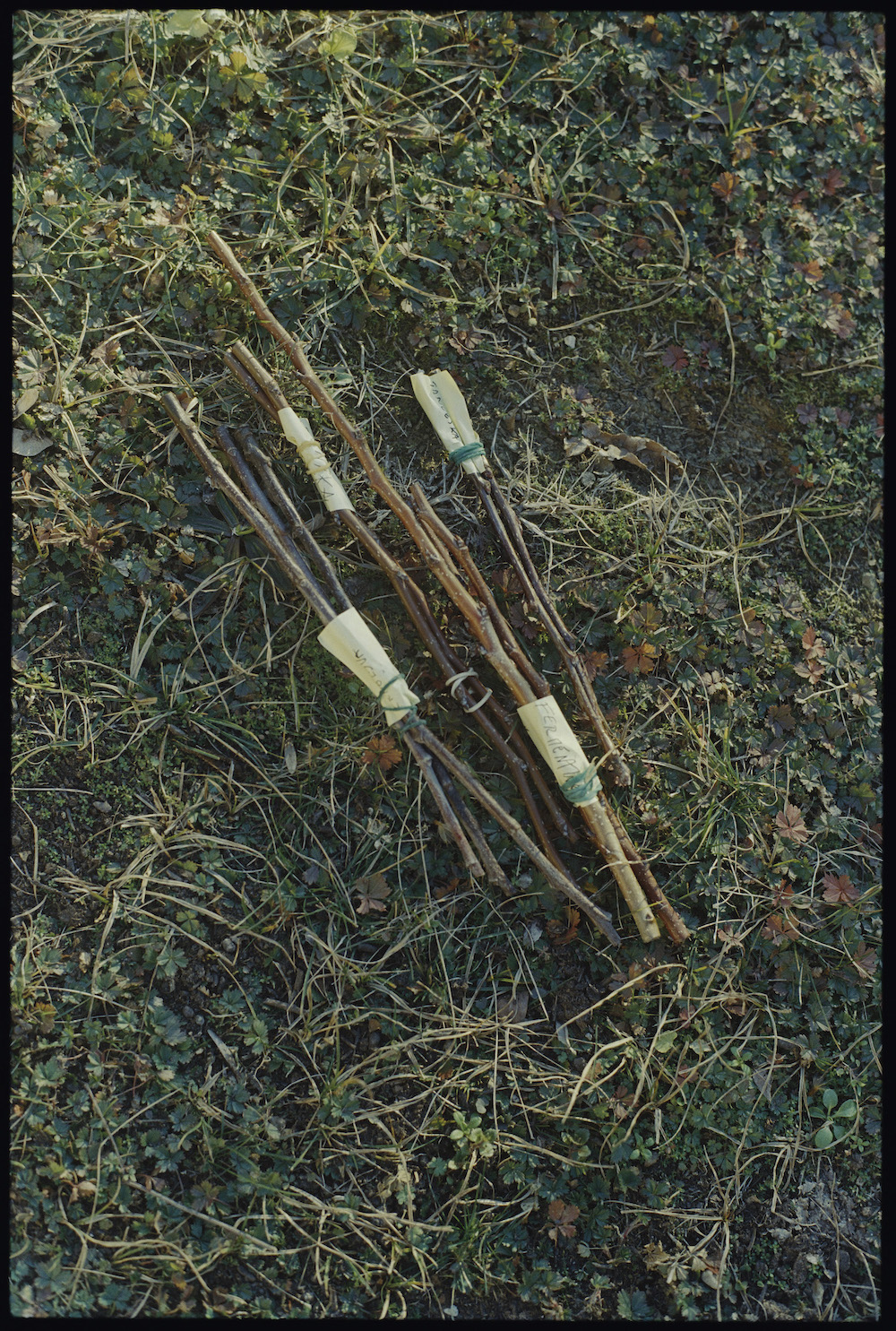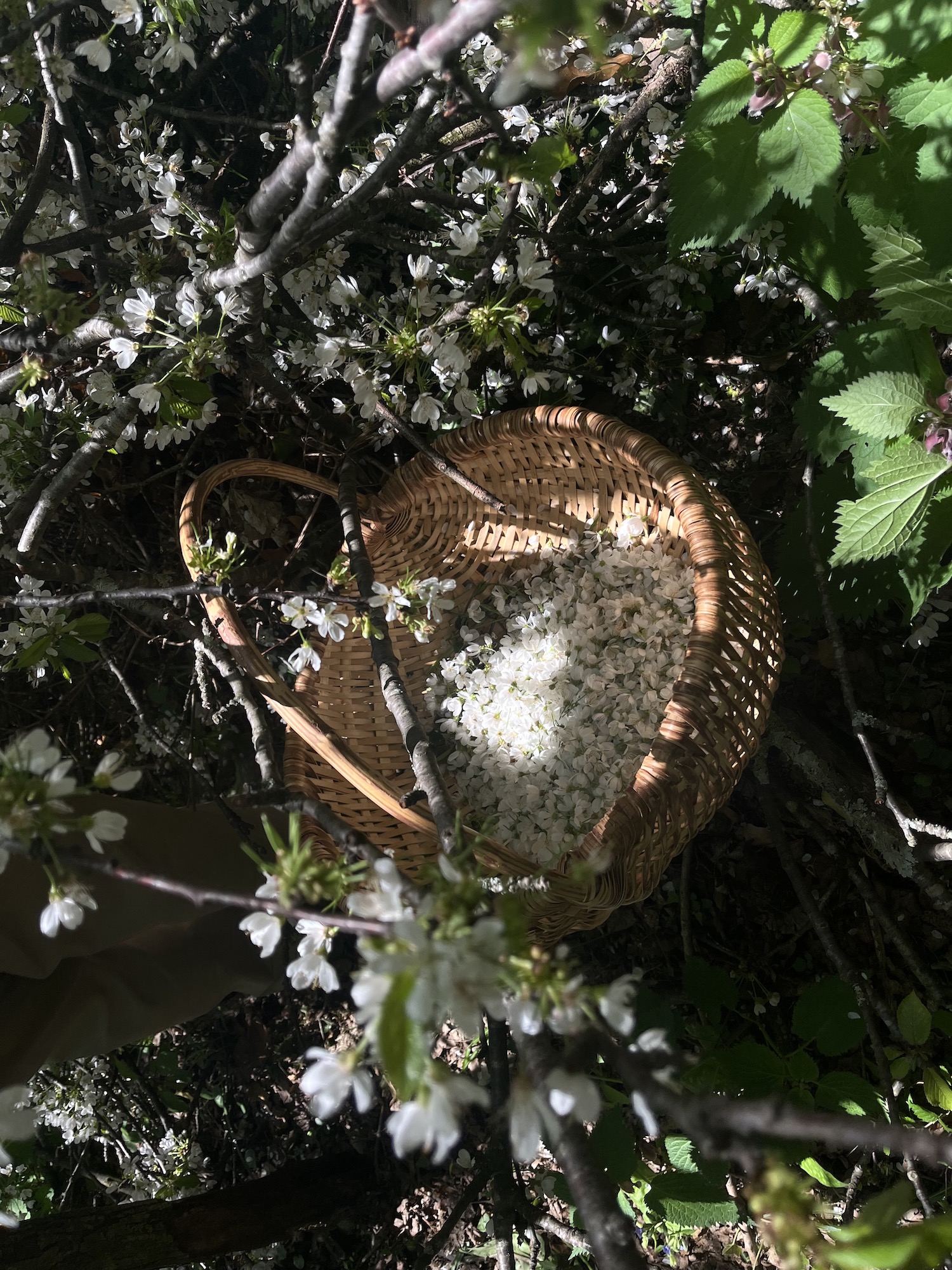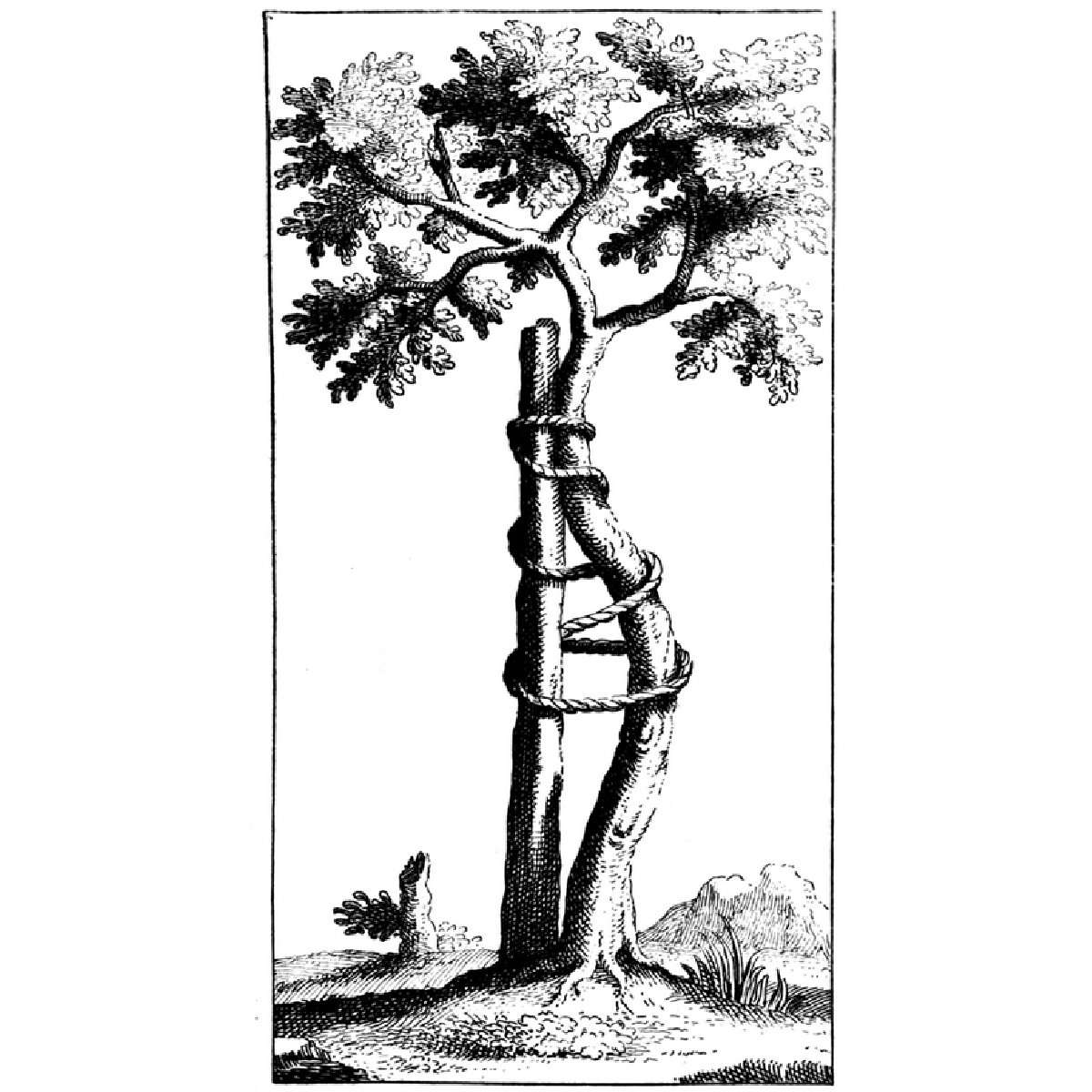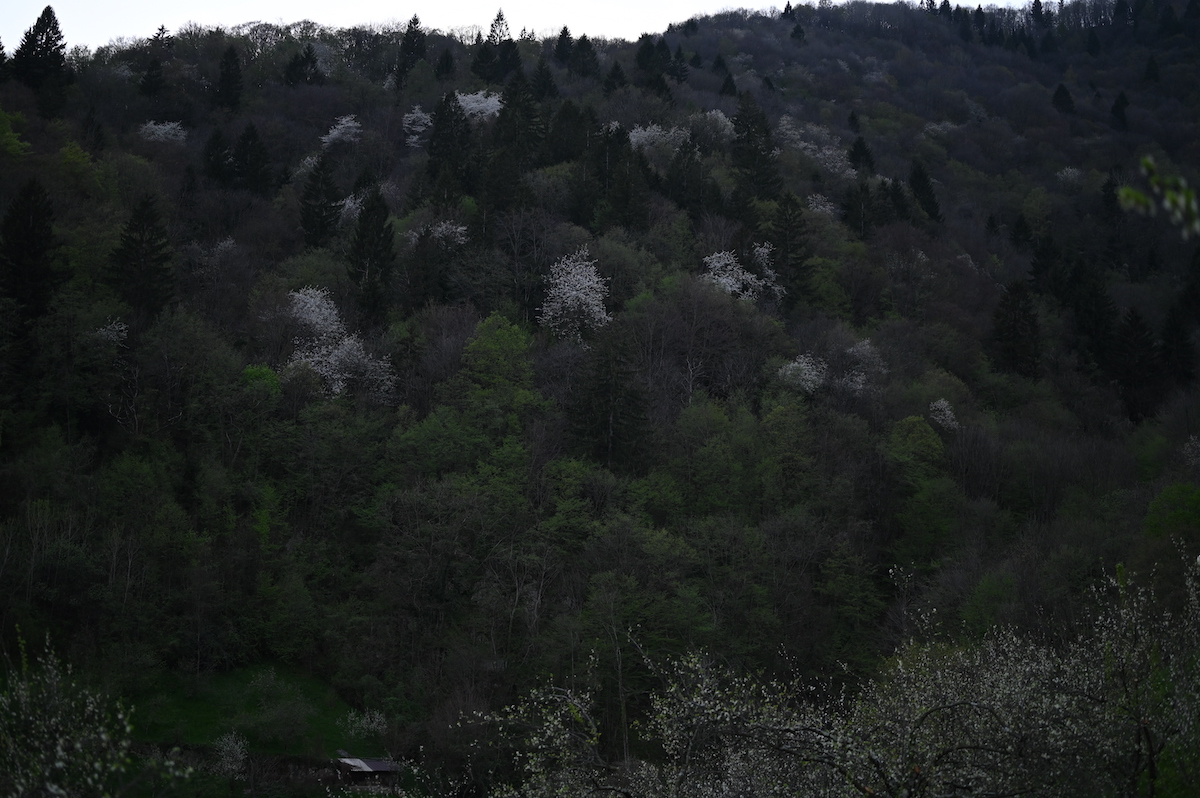Uncommon Fruits is a project born from the collaboration between the extended Robida collective (Topolò, Benečija) and Zavod Cepika (Kojsko, Goriška Brda) that investigates two different landscapes through the lens of fruit trees: one, Goriška Brda, characterised by an almost-monoculture of vine and the other, the one surrounding Topolò, by abandonment.
“[E]very form carries within itself its own contradiction. And precisely this resistance makes transformation possible.”
– Catherine Malabou, What Should We Do With Our Brain? (2008, Fordham University Press), p. 71.
Foto: Antônio Frederico Lasalvia

“[G]rapes are a felicitous example of a dialectical fruit. Grapes that are past their prime undergo fermentation; instead of simply rotting, they shed their initial form only to be reborn and, with a little assistance from humans, to metamorphose into wine. In the transition from grapes to wine, nature is dialectically transformed into culture, which is not coincidentally intimately tied to agriculture and, more specifically, to viniculture. Rather than signaling a separation from nature, culture is the cultivation and processing (here, the distillation) of nature’s fruits. The domain of Spirit (Geist) becomes accessible through the production of spirits. Wine, to be sure, causes inebriation, seduces us, and leads us astray from the gravitas of work, which may be credited with having created the space for cultural activity. This inner contradictoriness, palpable in the clash between the “causes” and the effects of wine, is responsible for its conceptual allure, however: while laying the inroads into culture, it is also an escape route from what we call civilization. In vino veritas acquires its perversely dialectical sense of being, at once, the womb and the tomb of culture.
When we press grapes, we squeeze out of them more than their juice, along with which flows the very logic of the Hegelian dialectics. As Hegel construes it, dialectics is a tortuous journey through a series of negations inherent in the negated thing itself, negations that, at the same time, cancel out, preserve, and elevate the negated. The technical word for this process is sublation, or, in German, Aufhebung. In fermenting, grapes lose their natural shape and therefore are negated, even as their juicy essence gets preserved and elevated, both literally and metaphorically—in the form of spirits and Spirit. Realizing their sweet essence in the state of ripeness, they must abandon their identity as grapes to keep something of themselves intact. The natural immediacy of a plant is sacrificed for the sake of a cultural mediation.”
Michael Marder: “Hegel’s Grapes”, in: The Philosopher's Plant: An Intellectual Herbarium (2014, Columbia University Press)
Philosopher Michael Marder writes in his book Dump Philosophy: A Phenomenology of Devastation (2020) that turning the world into a dump is accompanied by the death of death. In the current state of the world, he quickly acknowledges the nightmare that comes from fulfilling the dreams of the old Western metaphysics and capitalist economy. Metaphysics has always dreamed of immortality, infinity and eternity. This is followed by the capitalist logic of monstrous growth and production without end and place - eternal growth into infinity. Today, that dream came true. But it turned out that they can only come true in the form of a nightmare. Western metaphysics is the metaphysics of indigestion. Immortality, immutability, avoidance of death and finitude is today first embodied in the immortal garbage and non-degradable plastic that fills the world's oceans. Death, which is a part of life, is prevented. Death was executed.
And isn't the explosion of the nuclear reactor in Chernobyl the culmination of Western metaphysics? Organisms responsible for the decomposition of organic matter died due to radioactive radiation in Chernobyl and thus stopped performing their work of decomposition. This is how the impossibility of death also appeared in Chernobyl: "Chernobyl is, above all, a catastrophe of time," wrote novelist Svetlana Aleksievich in her book Voices from Chernobyl: The Oral History of a Nuclear Disaster (1997). The trees in the Red Forest near Chernobyl "are not decaying as they should, nor being digested into the earth nor transformed into compost. The timescale of finite life has been disrupted and the same fate has befallen death as well, which is to say, the material afterlife of rotting and decay," explains Marder in his book Chernobyl Herbarium: Fragments of Exploded Consciousness (2016). Toying with immortality and infinity, with time in general — this machine of decay — has shaped man into what he is, and has shaped the Earth into the dumping ground of the eternal. Marder therefore suggests that today the very smell of decay and rotting should represent the smell of salvation.
O how can it be that the ground itself does not sicken? / How can you be alive you growths of spring? / How can you furnish health you blood of herbs, roots, orchards, grain? / Are they not continually putting distemper'd corpses within you? / Is not every continent work'd over and over with sour dead? / Where have you disposed of their carcasses? / Those drunkards and gluttons of so many generations? / Where have you drawn off all the foul liquid and meat? / I do not see any of it upon you to-day, or perhaps I am deceiv'd, / I will run a furrow with my plough, I will press my spade through the sod and turn it up underneath, / I am sure I shall expose some of the foul meat. / Behold this compost! behold it well! / Perhaps every mite has once form'd part of a sick person—yet behold! / [...] / The summer growth is innocent and disdainful above all those strata of sour dead. / What chemistry! / That the winds are really not infectious, / [...] / That the fruits of the apple-orchard and the orange-orchard, that melons, grapes, peaches, plums, will none of them poison me, / That when I recline on the grass I do not catch any disease, / Though probably every spear of grass rises out of what was once a catching disease. / Now I am terrified at the Earth, it is that calm and patient, / It grows such sweet things out of such corruptions, / It turns harmless and stainless on its axis, with such endless successions of diseas'd corpses, / It distills such exquisite winds out of such infused fetor, / It renews with such unwitting looks its prodigal, annual, sumptuous crops, / It gives such divine materials to men, and accepts such leavings from them at last.
This terrible smell of rot disgusted the poet Walt Whitman, but at the same time, it also strangely filled him with life when he wrote the poem This Compost in 1856. He wonders how such exuberant life can grow out of putrefaction, supposed death. Philosopher Donna Haraway therefore says that we are all compost and man is not only homo, but especially humus. With this, she probably wants to draw attention to the fact that we are not so separate from everything that we have always perceived as low and inferior. There is a whole alternative history of philosophy that insisted on this thesis: flowering and rotting are two sides of the same coin; the striving of the plant towards the sun and the light – this high philosophical, Platonic motif – must be thought of in the same breath as the forcing of the plant into the depths of the earth – again a Platonic motif, but this time we feel a touch of baseness in it. We shouldn't. It may be true that the plant stretches as far as possible towards the sun, but soon the desire for even more life turns it towards the wet, dark and low-lying earth.
We can quickly realize that we know two concepts of death – death, which is one with life, the continuation of life, and death, which is a blockage of death itself and thus also a blockage of life. The more we think about it, the more we realize that life and death are two inseparable words and are not antonyms as we like to imagine. The more we reflect, the more we realize that we do not need infinity, we do not need an infinite and passive human-crystal, but rather a finite and active human-compost.
“Men have linked the brilliance of flowers to their amorous emotions because, on either side, it is a question of phenomena that precede fertilization. [...] It is interesting to observe, however, that if one says that flowers are beautiful, it is because they seem to conform to what must be, in other words they represent, as flowers, the human ideal. [...] [E]ven more than by the filth of its organs, the flower is betrayed by the fragility of its corolla: thus, far from answering the demands of human ideas, it is the sign of their failure. In fact, after a very short period of glory the marvelous corolla rots indecently in the sun, thus becoming, for the plant, a garish withering. Risen from the stench of the manure pile—even though it seemed for a moment to have escaped it in a flight of angelic and lyrical purity—the flower seems to relapse abruptly into its original squalor: the most ideal is rapidly reduced to a wisp of aerial manure. For flowers do not age honestly like leaves, which lose nothing of their beauty, even after they have died; flowers wither like old and overly made-up dowagers, and they die ridiculously on stems that seemed to carry them to the clouds. It is impossible to exaggerate the tragicomic oppositions indicated in the course of this death-drama, endlessly played out between earth and sky, and it is evident that one can only paraphrase this laughable duel by introducing, not as a sentence, but more precisely as an ink stain, this nauseating banality: love smells like death.”
Georges Bataille, “The Language of Flowers” in: Georges Bataille, Allan Stoekl (ed.), Visions of Excess (1985, University of Minnesota Press)
17th of October 2022
Dear diary,
this year – when I watch the forest surrounding Topolò every morning from the balcony of our house — it seems that autumn is approaching more slowly than in previous years. Not only did October spare us the usual cold and wet autumn days, but the transition between summer and autumn itself was less visible. At times, the forest seemed completely autumn-like even during this year's hot summer. Even then, the treetops were smeared with a light brown color and during our walks in the forest we were surprised by the prematurely fallen leaves. However, it is precisely in autumn that the forest's natural creation of herbariums is so much more pronounced. Every now and then, when flipping through books, I am surprised by a dried leaf inserted between the pages of the book. It takes me to the heart of the forest, I start thinking about who and where this synecdoche of the forest was collected. When Bruno Latour, a French anthropologist and philosopher of science, was describing the process of scientific research, he was taken over by a herbarium of plants from a Brazilian forest. He observed that the creation of a herbarium is extremely important for botany as a scientific profession and that this profession uses all those methods which help science in general to turn things into knowledge. A leaf that is dried in an oven at forty degrees Celsius—in order to kill all possible microorganisms that try to decompose it—becomes a mobile, controlled and timeless reference for further scientific processes of categorization, generalization, etc. Looking at the collection of dried plants, Latour asks: “Are we far from or near to the forest? Near, since one finds it here in the collection. The entire forest? No. Neither ants, nor trapdoor spiders, nor trees, nor soil, nor worms, nor the howler monkeys whose cry can be heard for miles are in attendance. Only those few specimens and representatives that are of interest to the botanist have made it into the collection. So are we, therefore, far from the forest?” In a way, we are extremely close to the forest. We are especially close to the idea of the forest that humans manage to think at all: a controlled forest or a plant as something singular and not as a huge ecosystem in which there are no singular entities. This entanglement is frightening and somewhat mentally passivating. On the other hand, we are incredibly far from the forest precisely because we do not try to think of it as it is. Latour continues: “In losing the forest, we win knowledge of it. In a beautiful contradiction, the English word ‘oversight’ exactly captures the two meanings of this domination by sight, since it means at once looking at something from above and ignoring it.” We also have the word for oversight in Slovenian: spregled. The herbarium oversees the forest, for to oversee in the same breath means (1) to find out something or to know a thing as it really is, and (2) not to see or not to notice. We capture the plant in a timeless reality and can study it, approach it, create a relationship with it. At the same time, we overlook that the truth of this stored plant, that dry leaf that sticks between the pages of a novel on the shelf in our house, is actually that it is transformed into fertile soil for a new life.
“Part of the importance of food, eating, and awareness of tasting, swallowing, digesting is that they do direct attention to the supposedly "lower" aspect of being human – the fact that we are animal and mortal. Eating is and must be rooted in a relentless routine of hunger, swallowing, satiety, and hunger again. (...) Because eating is a repetitive and transient experience, because food does not last but spoils, because it not only nourishes but poisons, eating is a small exercise in mortality.”
Carolyn Korsmeyer, Making Sense of Taste: Food and Philosophy (1999, Cornell University Press), p. 49.
